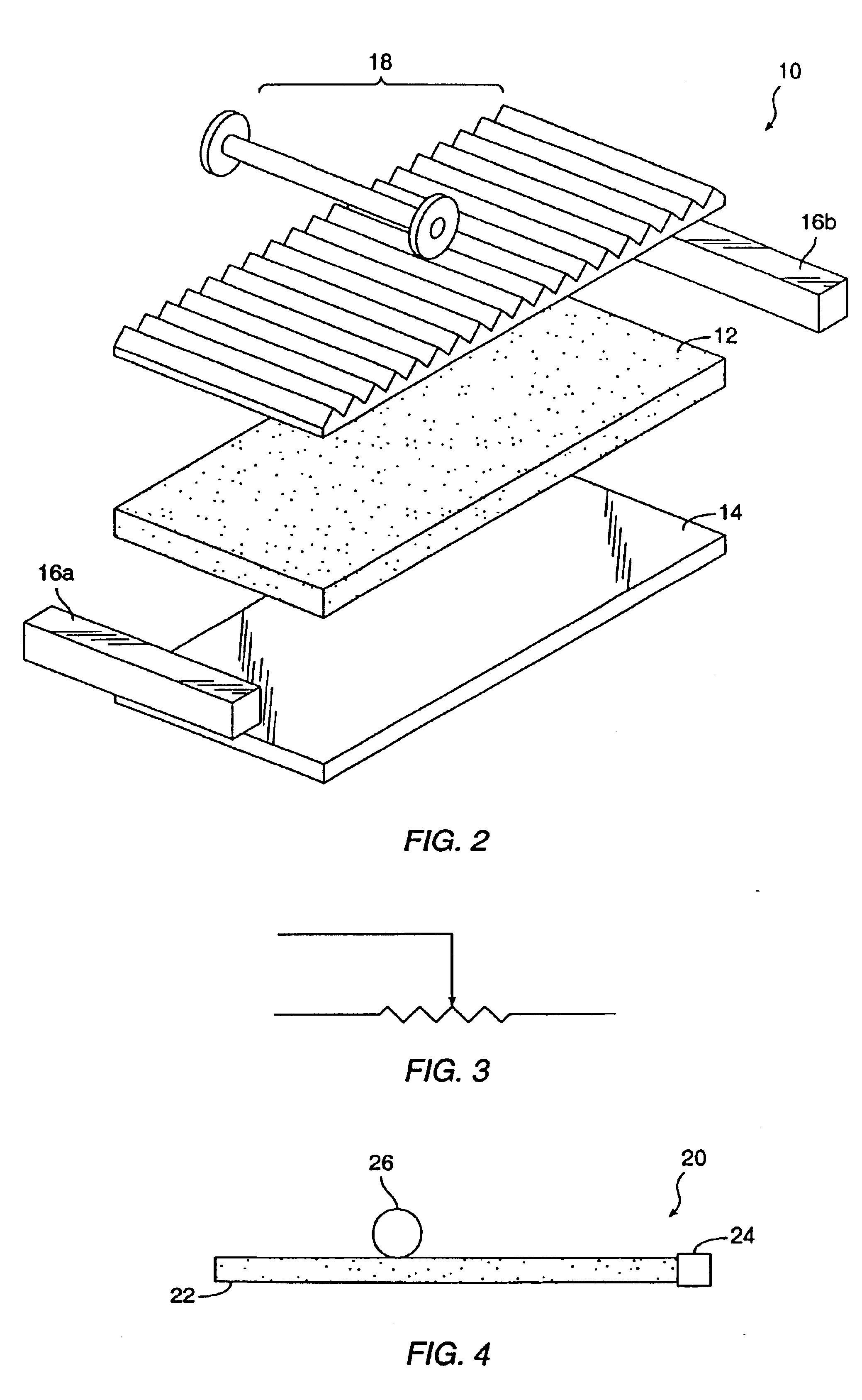Variable resistance devices and methods
a variable resistance and rubber technology, applied in the direction of adjustable resistors, thermistors with sliding contact, resisitors with positive temperature coefficient, etc., can solve the problem that the use of resistive rubber in variable resistance devices has been limited to relatively simple and specific applications
- Summary
- Abstract
- Description
- Claims
- Application Information
AI Technical Summary
Benefits of technology
Problems solved by technology
Method used
Image
Examples
Embodiment Construction
[0040]The variable resistance devices of the present invention include components made of resistive resilient materials. An example is a low durometer rubber having a carbon or a carbon-like material imbedded therein. The resistive resilient material advantageously has a substantially uniform or homogeneous resistivity, which is typically formed using very fine resistive particles that are mixed in the rubber for a long period of time in the forming process. The resistive property of resistive resilient material is typically measured in terms of resistance per a square block or sheet of the material. The resistance of a square block or sheet of a resistive resilient material measured across opposite edges of the square is constant without regard to the size of the square. This property arises from the counteracting nature of the resistance-in-series component and resistance-in-parallel component which make up the effective resistance of the square of material. For instance, when two...
PUM
| Property | Measurement | Unit |
|---|---|---|
| resistance | aaaaa | aaaaa |
| resistance | aaaaa | aaaaa |
| resistance | aaaaa | aaaaa |
Abstract
Description
Claims
Application Information
 Login to View More
Login to View More - R&D
- Intellectual Property
- Life Sciences
- Materials
- Tech Scout
- Unparalleled Data Quality
- Higher Quality Content
- 60% Fewer Hallucinations
Browse by: Latest US Patents, China's latest patents, Technical Efficacy Thesaurus, Application Domain, Technology Topic, Popular Technical Reports.
© 2025 PatSnap. All rights reserved.Legal|Privacy policy|Modern Slavery Act Transparency Statement|Sitemap|About US| Contact US: help@patsnap.com



